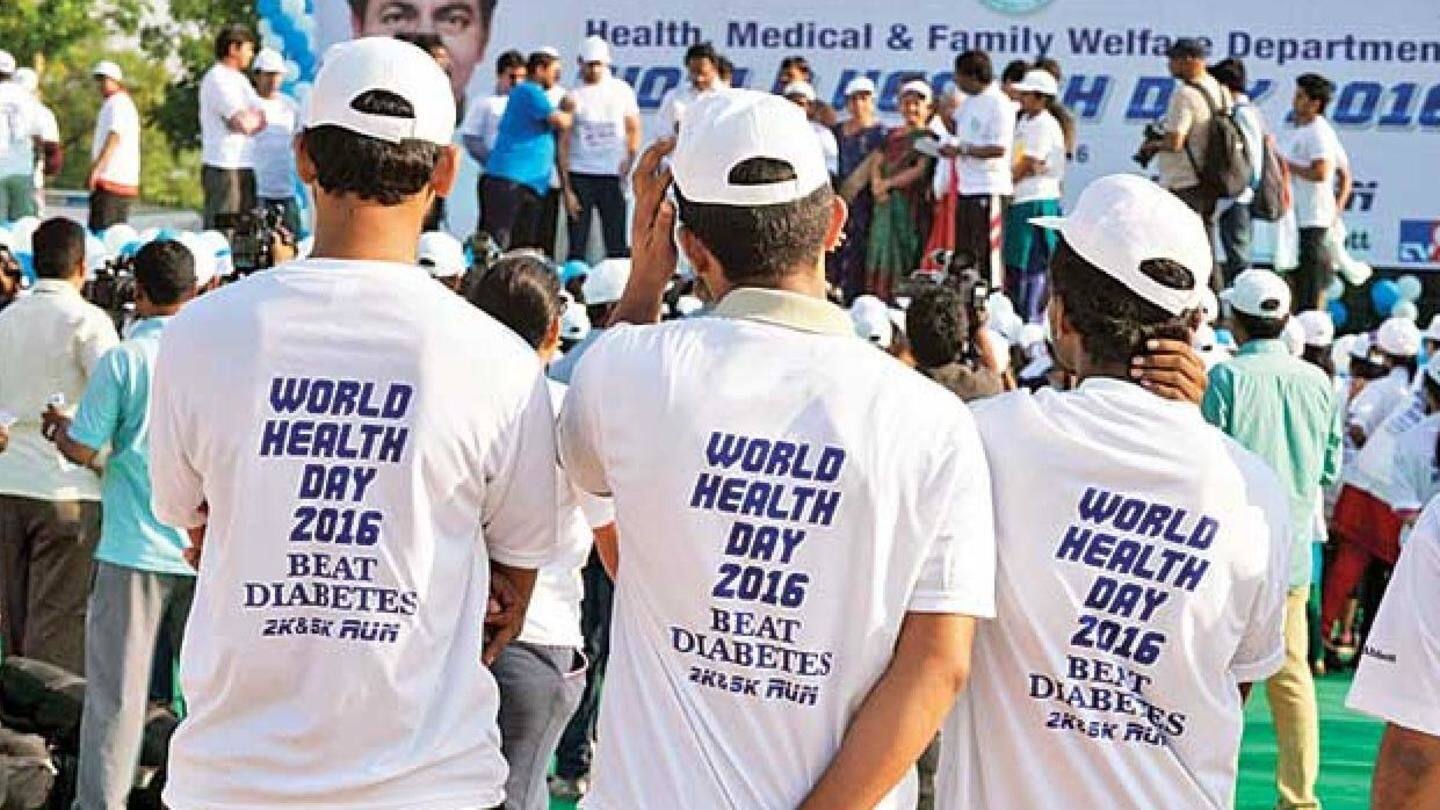
Indian doctors protest US body's diabetes treatment guidelines
What's the story
A proposed set of modified guidelines for managing diabetes globally, issued by the American College of Physicians (ACP), has created a stir among doctors in India.
Most medical experts here concur that the recommended sugar level target of 7-8%, as compared to the traditionally followed 6.5-7%, isn't suitable for the Indian population.
Rather, recommendations of India's three advisory bodies should be followed, they say.
Recommendations
The recommendations that have riled many
Recently, ACP's Dr. Amir Qaseem and colleagues made four major recommendations: personalizing goals for blood sugar control based on personal and practical factors, de-intensifying drug therapy in patients with A1C levels below 6.5%, and avoiding targeting A1C levels in patients with less than 10 years of life expectancy.
However, most controversial is the suggestion to achieve an A1C level between 7-8% in Type-2 patients.
A1C
But what is the A1C?
A1C, or more correctly HbA1C, refers to glycated haemoglobin. This is formed when haemoglobin in the red blood cells mixes with glucose in the blood, thus becoming 'glycated.'
A1C levels reflect a person's average blood glucose level in the last few weeks/months.
Higher the A1C levels, greater the risk of developing diabetes-related symptoms.
Traditionally, diabetes specialists have targeted A1C levels of 6.5-7%.
India
So why won't the global suggestions be suitable for India?
Indian doctors feel the proposed target will lead to serious complications in treatment of diabetes, which is more aggressive here, and put more people at risk.
Studies have shown that maintaining A1C at 7% or below prevents nerve, eye and kidney problems, they said.
India anyway has the ICMR, RSDDI and API, which are aware of the Indian lifestyle, to recommend targets, they added.
Quote
Do American norms apply in India anyway?
"Indian physicians continue to follow US-based guidelines, hence ACP guidelines may have substantial impact here. If blood sugar control is loosened (as advised by ACP), more patients in India will suffer from complications, the burden of which is already high," said Anoop Misra, Fortis-C-DOC Chairman.
Stats
India has the most diabetics, to increase 150% by 2030
According to WHO, India has the highest number of diabetics in the world, followed by China, US, Indonesia, Japan, Pakistan, Russia, Brazil, Italy and Bangladesh.
In 2000, there were 31.7mn diabetics in India. By 2030, it is expected to rise by 150% to a whopping 79.4mn.
The National Institute of Nutrition says a balanced diet consisting all essential food groups, micro and macronutrients will reduce the risk.